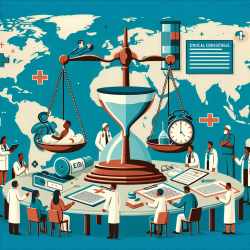Introduction
Artificial Intelligence (AI) is revolutionizing numerous sectors, including occupational safety and health (OSH). The research article titled "REDECA: A Novel Framework to Review Artificial Intelligence and Its Applications in Occupational Safety and Health" introduces a framework that highlights AI's potential in improving workplace safety. This blog explores how practitioners can leverage the REDECA framework to enhance safety protocols and encourages further research in this domain.
Understanding the REDECA Framework
The REDECA framework stands for Risk Evolution, Detection, Evaluation, and Control of Accidents. It provides a structured approach to assess how AI can anticipate and control exposure risks in various industrial sectors. The framework was developed by reviewing 260 AI papers across five sectors: oil and gas, mining, transportation, construction, and agriculture.
Applications and Insights
The REDECA framework highlights several AI applications in occupational safety:
- Oil and Gas: AI is used to develop sensors that detect hazardous situations, improving safety by monitoring environmental conditions and machinery.
- Mining: AI applications focus on using sensors and autonomous robots to monitor environmental conditions, reducing the risk of accidents in harsh mining environments.
- Transportation: AI helps in developing fatigue detection systems for drivers, using data from biological and vehicular sensors to predict and prevent accidents.
- Construction: AI aids in fall detection and prevention, using wearable devices and machine learning algorithms to monitor worker safety.
- Agriculture: AI applications include the use of sensors and actuators to remove workers from hazardous conditions, focusing on human-robot interaction to improve safety.
Opportunities for Practitioners
Practitioners can improve their skills by integrating AI technologies into their safety protocols. The REDECA framework provides a comprehensive understanding of AI applications in OSH, highlighting areas for further exploration and collaboration. By focusing on AI's strengths in detection and prevention, practitioners can develop more effective safety interventions.
Encouraging Further Research
While the REDECA framework offers valuable insights, there is a need for further research to explore AI's full potential in occupational safety. Practitioners are encouraged to investigate AI applications beyond the current scope, focusing on developing AI models that address gaps in the literature, such as interventions for workers in high-risk environments.
Conclusion
The REDECA framework provides a novel approach to understanding AI's role in occupational safety. By leveraging AI technologies, practitioners can enhance safety protocols and create better outcomes for workers across various industries. Continued research and collaboration are essential to fully realize AI's potential in improving workplace safety.
To read the original research paper, please follow this link: REDECA: A Novel Framework to Review Artificial Intelligence and Its Applications in Occupational Safety and Health.










